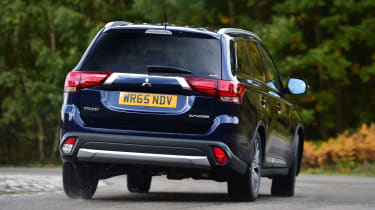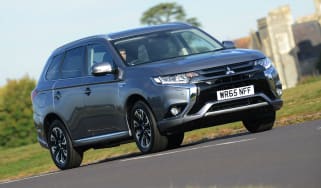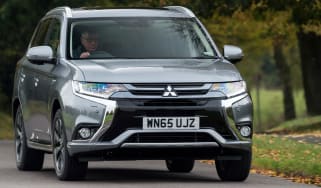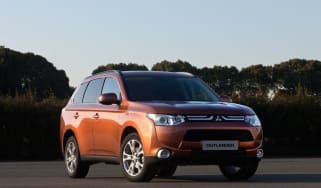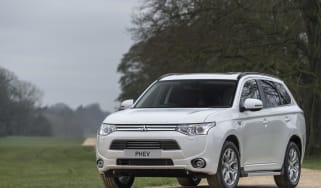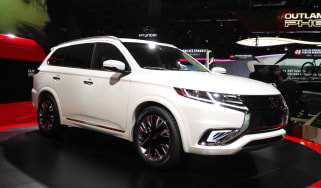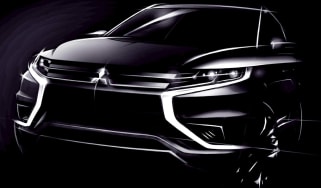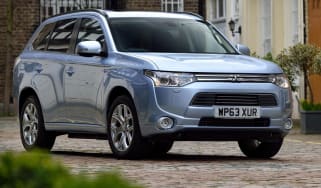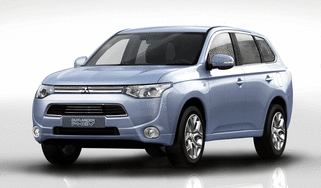Mitsubishi Outlander SUV review (2012-2021)
“The Mitsubishi Outlander is a practical SUV with seven seats, traditional 4x4 looks and standard four-wheel drive”
Pros
- Optional seven-seat practicality
- Good off-road
- Huge boot
Cons
- Dated interior
- Rivals offer better performance
- Awkward rear-seat access
Mitsubishi isn’t the biggest car brand in the UK and the conventionally powered Outlander SUV is comprehensively outshone by the plug-in hybrid version, the Outlander PHEV. The petrol Outlander still has plenty going for it, even with strong competition in the form of the Nissan X-Trail, Skoda Kodiaq and Kia Sorento.
Rivals like the Ford Kuga are more stylish than the Outlander and the prestigious Land Rover Discovery Sport is more desirable, too. Some buyers may appreciate the Outlander’s traditional SUV looks, however, and tweaks to the styling since the car was launched has added some visual appeal, thanks particularly to a sleeker nose that incorporates LED headlights.
Best medium size and family SUVs
The Outlander has typically straightforward Mitsubishi interior styling. Everything is logically arranged and there’s plenty of kit as standard, but the appearance is a little bland. The Outlander’s boxy dimensions mean that interior space is generous, with plenty of space for five adults. An advantage of the standard car over the more popular PHEV version is that the lack of a battery means there’s room for a third row of seats in the back.
There's no diesel option (this was cut from the range in 2018), leaving a 2.0-litre petrol unit as the only option besides the PHEV version that we've reviewed separately. This model should suit drivers making lots of short trips, but its fuel economy figure of 32.5mpg and CO2 emissions of 171g/km of CO2 mean its running costs aren't quite as cheap as a diesel.
More reviews
While SUVs like the SEAT Ateca are increasingly marketed for their sporty handling, the Outlander feels far more sedate, with little feedback through the controls, noticeable body lean in sharp corners and the odd thump through the whole car should you hit a bump in the road. If you want your SUV to handle with the finesse of a hatchback or saloon, the SEAT Ateca, Renault Koleos, Mazda CX-5 or Ford Kuga will serve you far better.
This standing could be reversed off-road though, where the Outlander’s high ground clearance and four-wheel drive means it can cope with deeper ruts and steeper slopes than most of its rivals. There’s even a centre locking differential to boost traction and keep you from getting stuck.
Mitsubishi has pared back the Outlander range, but the new entry-level Design model comes with seven seats, automatic lights and wipers, LED daytime running lights, dual-zone climate control and cruise control. It also includes alloy wheels, a reversing camera, keyless entry Bluetooth, Apple CarPlay, Android Auto and heated front seats. Step up to the Outlander Exceed for sat nav, a 360-degree parking camera, leather upholstery, LED headlights and a heated steering wheel.
The Outlander is a safe car – Euro NCAP awarded it five stars in its crash tests when it was crash-tested in 2012 - however the test has become much tougher since then. Owners don’t rate Mitsubishi as a brand particularly well: it placed 21st out of 30 manufacturers in our 2019 Driver Power customer satisfaction survey, although that’s still ahead of premium manufacturers like Mercedes and BMW. The Outlander was the only Mitsubishi to feature in our Driver Power top 100 cars list but it came a disappointing 88th place.
All in all, the Outlander's European rivals have that little more general appeal, in looks, feel and performance. Without the theoretical economy advantages of the PHEV, the Outlander struggles for a unique selling point. However, if you want a spacious family SUV that's more substance than style, you might appreciate the Mitsubishi.


